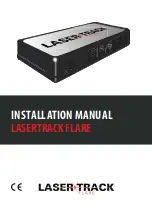
1- 24
FEATURES OF YOUR HYUNDAI
o Children who are too large to be
in a child restraint should sit in
the rear seat and be restrained
with the available lap/shoulder
belts.
Never allow children to ride in
the front passenger seat.
o Always make sure that the shoul-
der belt portion of the outboard
lap/shoulder belt is positioned
midway over the shoulder, never
across the neck. Moving the child
closer to the center of the vehicle
may help provide a good shoul-
der belt fit. The lap belt portion of
the lap/shoulder belt or the cen-
ter seat lap belt must always be
positioned as low as possible on
the child's hips and as snug as
possible.
o If the seat belt will not properly fit
the child, Hyundai recommends
the use of an approved booster
seat in the rear seat in order to
raise the child's seating height
so that the seat belt will properly
fit the child.
WARNING:
o A child restraint system must be
placed in the rear seat. Never
install a child or infant seat on
the front passenger's seat.
Should an accident occur and
cause the passenger side airbag
to deploy, it could severely in-
jure or kill an infant or child seated
in an infant or child seat. Thus,
only use a child restraint in the
rear seat of your vehicle.
o Since a safety belt or child re-
straint system can become very
hot if it is left in a closed vehicle,
be sure to check the seat cover
and buckles before placing a
child there.
o When the child restraint system
is not in use, store it in the trunk
or fasten it with a safety belt so
that it will not be thrown forward
in the case of a sudden stop or an
accident.
o Never allow a child to stand up or
kneel on the seat.
o Never use an infant carrier or
child safety seat that "hooks"
over a seatback; it may not pro-
vide adequate security in an ac-
cident.
o Never allow a child to be held in
a person's arms while they are in
a moving vehicle, as this could
result in serious injury to the
child in the event of an accident
or a sudden stop. Holding a child
in a moving vehicle does not
provide the child with any means
of protection during an accident,
even if the person holding the
child is wearing a seat belt.
o If the child restraint seat is not
anchored properly, the risk of a
child being seriously injured or
killed in a collision greatly in-
creases.
!
















































